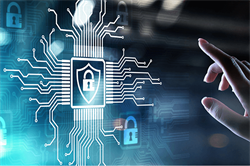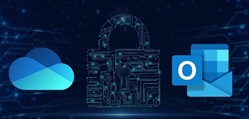Posted: Thursday, September 12, 2024


Posted: Thursday, September 12, 2024
In today’s digital age, businesses and individuals alike are increasingly reliant on technology. While this brings numerous benefits, it also exposes us to a growing array of cyber threats. From data breaches to ransomware attacks, the potential risks are vast and can have devastating consequences.
According to the 2024 Cost of a Data Breach Report released by IBM, there was a 10% jump in the average cost of a data breach worldwide as compared to the previous year, at a staggering $4.88 million USD. The worst part is the negative domino effect this can result in. The report further states that more than half of the organizations surveyed said they are passing the added costs onto their customers, thus leading to a widespread increase in good and services all around. Having cyber insurance can help offset some of those costs incurred as a result of a data breach, thus minimizing your downtime and potentially avoiding the need to defer these costs to the customer.
Let’s explore in more detail why having cyber insurance is crucial in this generation.
Number of views (2929)
Posted: Wednesday, July 17, 2024

Posted: Wednesday, July 17, 2024
Demystifying Reconnaissance in Cybersecurity
Evolving threats, evolving tools: As cybercrime gets smarter, attackers leverage advanced technologies to build sophisticated malware and vulnerability scanners for their intended targets - this is known as the reconnaissance phase - the quiet before the storm, so to speak. Would-be attackers use various tools to understand the target’s networks and systems to determine the possible entry points and exploitable vulnerabilities.
In this post, we explore what the reconnaissance phase is and how to overcome it.
Number of views (7758)
Posted: Tuesday, April 16, 2024

Posted: Tuesday, April 16, 2024
And why you need a strategy in place for both.
In today's digital age, the importance of protecting your data from cyber threats and disasters cannot be overstated. Two key components of any comprehensive data protection plan are cyber recovery and disaster recovery. While these terms may sound similar, they serve distinct purposes and play unique roles in safeguarding your valuable information.
Number of views (3736)
Posted: Wednesday, January 24, 2024


Posted: Wednesday, January 24, 2024
Azure Sentinel and Microsoft Defender are both robust security solutions offered by Microsoft, but they have different purposes and features. In this post, we'll explore the key differences between each tool:
Microsoft Defender is a sophisticated security solution that allows you to prevent, discover, and remediate malicious threats from one unified dashboard. This integrated solution provides comprehensive protection for all Microsoft 365 services, including Exchange Online, SharePoint Online, OneDrive for Business, and Microsoft Teams. It uses AI and machine learning so you can respond to threats in real-time. Microsoft 365 Defender also provides detailed threat intelligence.
Azure Sentinel, on the other hand, is a cloud-native Security Information Event Management (SIEM) and Security Orchestration Automated Response (SOAR) solution. It delivers intelligent security analytics and threat intelligence across the enterprise, providing a single solution for alert detection, threat visibility, proactive hunting, and threat response. The benefit with Azure Sentinel is that it makes it easy to collect security data across your entire hybrid organization from devices, users, apps, servers, and any cloud1. With the power of artificial intelligence and machine learning, Sentinel ensures that real threats are identified quickly.
Number of views (14034)
Posted: Monday, October 30, 2023

Posted: Monday, October 30, 2023
As we mark the end of cybersecurity awareness month, let's take a look at some of the cybersecurity trends we will see on the rise in 2024:
1. AI and Machine Learning in Security: The use of AI and machine learning for both defensive and offensive cybersecurity measures is likely to continue to evolve. AI-driven attacks and defenses will likely become more sophisticated.
2. Zero Trust Architecture: The adoption of a zero-trust security model is expected to increase, where no entity, internal or external, is trusted by default. This concept of continuously authenticating adds a thicker layer of security.
Number of views (5315)
Posted: Monday, October 16, 2023


Posted: Monday, October 16, 2023
We know there are a myriad of different types of cyber attacks that have evolved over the years. From ransomware to phishing, the list grows as hackers become more sophisticated.
Las Vegas' MGM Grand was hit with a major cyber attack in September that lasted several days affecting IT systems, hotel keys, casinos and other digitally-driven resouces, which, to say the least, threw a wrench into the experience of many of the visitors there during that period.
One might wonder how an organization as large and prominent as the MGM grand could be hit with such a massive attack (which resulted in the loss of around $100 Million) and it almost always comes down to the attack vector. In the case of the MGM Grand, it was reported to have been an attack that originated through social engineering where an unassuming employees were duped into disclosed sensitve information that ultimately resulted in the onslaught of this widespread breach.
Number of views (4657)
Posted: Thursday, October 5, 2023


Posted: Thursday, October 5, 2023
What They Are and How to Avoid Them
October is Cybersecurity Awareness Month so our blog posts for this month will focus on differents areas of cybersecurity to continue to drive awareness and education on evolving trends.
This week, our focus will be on ransomware - specifically double and triple extortion ransomware.
Traditional ransomware, as we know, has been around for decades.In a "regular" ransomware attack, system data is locked and encrypted until the victim agrees to pay the attacker to get the data back. This has proven unsuccessful for attackers, however, because victims can often restore their data and systems from backups.
The first ever ransomware attack is reported to have occurred in 1989 with the "AIDS trojan", where 20,000 infected floppy discs were handed out at that year's World Health Organization (WHO) AIDS conference. After a certain number of boots, user files were then encrypted with an ask for a ransom to be sent to a PO box. Luckily, the ransomware was fairly easy to isolate and remove using technology available at that time.
Of course, ransomware has evolved rapidly since then becoming much more sophisticaed over the years. Enter double and even triple extortion ransomware.
Number of views (4394)
Posted: Thursday, July 20, 2023

Posted: Thursday, July 20, 2023
How the two concepts complement each other to delivered enhanced security measures.
Zero Trust and SASE (Secure Access Service Edge) are two important concepts in modern cybersecurity that actually complement each other to create a robust and comprehensive security framework for organizations across all industries. Instead of being concepts that would compete with one another, they can work together to enhance an organization's overall security posture.
Number of views (6187)
Posted: Wednesday, May 24, 2023

Posted: Wednesday, May 24, 2023
Privileged Access Management (PAM) and Identity Access Management (IAM) are two related but distinct concepts in the world of cybersecurity. While they both deal with regulating access to resources, they have inherently different objectives.
Let's look at both in more detail:
Identity Access Management (IAM): IAM follows the principle of least privilege allowing the management of staff identities so that only authorized personnel can access and update files that are meant for them based on their roles and responsibilities. This type of access control involves conditional access security at the system, user, and directory level with insights into access policies, centralized identities, and more. It deals with the entire lifecycle of user identities, including user provisioning, authentication, authorization, and user deprovisioning.
Number of views (6497)
Posted: Wednesday, May 3, 2023


Posted: Wednesday, May 3, 2023
Application vulnerability scanning is an essential aspect of any organization's cyber resiliency strategy as it takes a proactive approach to help identify security vulnerabilities in software applications before they can be exploited by attackers.
The importance of application vulnerability scanning can be summed up as follows:
- Identify vulnerabilities: Scanning helps identify vulnerabilities that exist in an application that could be exploited by hackers to gain unauthorized access or compromise the application's integrity. This allows organizations to take proactive measures to fix the vulnerabilities before they can be exploited.
- Compliance: Organizations are often required to comply with industry-specific regulations and standards such as the Payment Card Industry Data Security Standard (PCI DSS), Health Insurance Portability and Accountability Act (HIPAA), General Data Protection Regulation (GDPR) which require periodic vulnerability assessments to be conducted.
- Cost savings: The cost of remediating a vulnerability after an attack is significantly higher than the cost of identifying and fixing it proactively. Thus, application vulnerability scanning can save an organization a significant amount of money by reducing the risk of successful attacks.
- Reputation: A successful attack on an organization's application can cause significant damage to its reputation, leading to a sense of distrust, a loss of customers, revenue, and shareholder value. By proactively identifying and fixing vulnerabilities, and having a strong, overall cyber resiliency plan, organizations can demonstrate a commitment to security and protect their reputation at all costs.
Overall, application vulnerability scanning is a crucial aspect of any organization's security strategy, helping to reduce the risk of successful attacks, save costs, and protect the organization's reputation.
Number of views (4325)